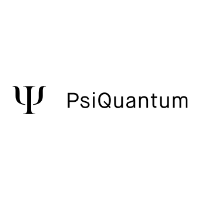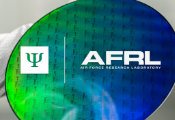New Insight Into Unique Kagome Superconductors That Could Advance Applications of Quantum Materials
New Insight Into Unique Kagome Superconductors That Could Advance Applications of Quantum Materials
The scientific community has faced a significant challenge in understanding what drives the complex behaviors, particularly the superconductivity of kagome materials. New research led by Zhenglu Li, assistant professor of materials science at the USC Viterbi School of Engineering, uses a computational approach to unlock the mystery of kagome superconductors, offering unique insights into the way electrons interact with the lattice dynamics.
Researchers Discover New Method for Cooling Computer Chips
Researchers Discover New Method for Cooling Computer Chips
Yale researchers, in collaboration with scientists from City University of New York, California Institute of Technology, Kansas State University and ETH Zurich, leveraged the unusual properties of phonon-polaritons, a type of quasiparticle, to discover a new way to dissipate the energy of high-speed electrons through the generation of long wavelength infrared light.
Good Vibrations: Scientists Discover a Groundbreaking Method for Exciting Phonon-Polaritons
Good Vibrations: Scientists Discover a Groundbreaking Method for Exciting Phonon-Polaritons
Newly published research in the journal Nature demonstrates a new way of generating long-wave infrared and terahertz waves, which is an important step toward creating materials that can help realize these technological advances. The work, led by researchers at the CUNY ASRC paves the way for cheaper, smaller long-wave infrared light sources and more efficient device cooling.
Exciting Moments on the Edge
Exciting Moments on the Edge
For the first time, researchers have demonstrated that phosphorene nanoribbons (PNRs) exhibit both magnetic and semiconducting properties at room temperature. The research, led by the University of Cambridge with international colleagues, establishes PNRs as a unique class of low-dimensional materials that challenges conventional views on magnetic semiconductors, and could provide a stepping stone to unlocking new quantum technologies.
How Carbon Nanotubes Give Out More Than They Receive
How Carbon Nanotubes Give Out More Than They Receive
Three RIKEN physicists have discovered how tiny tubes of carbon spit out light that is more energetic than the light shone on them. This finding could help to exploit the process in applications such as solar power and biological imaging.
Mesoporous Silicon: Semiconductor With New Talents
Mesoporous Silicon: Semiconductor With New Talents
Silicon is the best-known semiconductor material. However, controlled nanostructuring drastically alters the material's properties. Using a specially developed etching apparatus, a team at HZB has now produced mesoporous silicon layers with countless tiny pores and investigated their electrical and thermal conductivity. For the first time, the researchers elucidated the electronic transport mechanism in this mesoporous silicon. The material has great potential for applications and could also be used to thermally insulate qubits for quantum computers.
Magnetic Switch Traps Quantum Information Carriers in One Dimension
Magnetic Switch Traps Quantum Information Carriers in One Dimension
A quantum “miracle material” could support magnetic switching, a team of researchers at the University of Regensburg and University of Michigan has shown. his recently discovered capability could help enable applications in quantum computing, sensing and more. While earlier studies identified that quantum entities called excitons are sometimes effectively confined to a single line within the material chromium sulfide bromide, the new research provides a thorough theoretical and experimental demonstration explaining how this is connected to the magnetic order in the material.
New Nanoscale Technique Unlocks Quantum Material Secrets
New Nanoscale Technique Unlocks Quantum Material Secrets
Argonne researchers have developed a cutting-edge technique to study atomic vibrations near material interfaces, opening doors to new quantum applications in computing and sensing.
UChicago Scientists Make Major Advance in Quantum Sound
UChicago Scientists Make Major Advance in Quantum Sound
Pritzker Molecular Engineering researchers entangled two physically separate resonators.
Researchers Discover Simultaneous Negative Photoconductivity and Superconductivity by Pressure-Driven Phase Transition
Researchers Discover Simultaneous Negative Photoconductivity and Superconductivity by Pressure-Driven Phase Transition
A research team led by Prof. WANG Xianlong and Dr. WANG Pei from Institute of Solid State Physics, the Hefei Institutes of Physical Science of the Chinese Academy of Sciences discovered a concurrent negative photoconductivity (NPC) and superconductivity in PbSe0.5Te0.5 by pressure-induced structure transition.


























